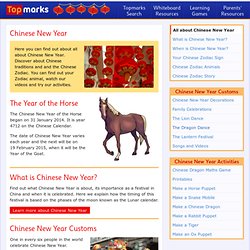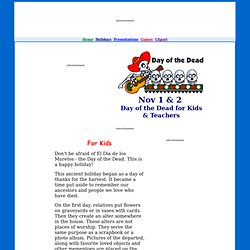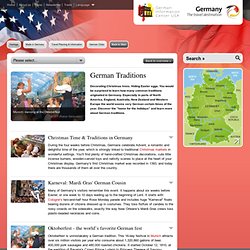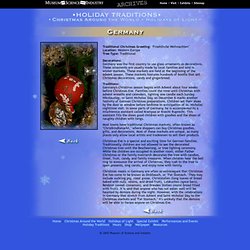

Forvo: the pronunciation guide. All the words in the world pronounced by native speakers. LanguageGuide: Foreign Language Vocabulary, Grammar, and Readings. Free Quizzes: Foreign Languages. The Modern Language Club » Blog Archive » The Year of the Ox: Got Milk?
Chinese New Year. Here you can find out about all about Chinese New Year.

Discover about Chinese traditions and and the Chinese Zodiac. You can find out your Zodiac animal, watch our videos and try our activities. Find out what Chinese New Year is about, its importance as a festival in China and when it is celebrated. Chinese New Year activities for kids and teachers - kiddyhouse.com. In 2014, Chinese New Year falls on January 31st.

It ends on February 14 which is also Valentine's Day.. Chinese New Year lasts for 15 days. However, do take note that Chinese New Year has no fixed date. That Quiz - Math Test Activities. In Mexico, Celebrating the Day of the Dead - The New York Times > Travel > Slide Show. Day Of The Dead in Mexico Articles, Pictures and Recipes. In pictures: Day of the Dead festival. In many parts of Latin America, as well as the Philippines, people have been marking the Day of the Dead festival in honour of deceased relatives.

In the Philippines, millions of Catholics congregate with family members at the gravesides of dead loved ones to celebrate their memory. Here, a boy is silhouetted as he cleans a cross marking the grave of a loved one in a Manila cemetery. In Mexico, the Day of the Dead combines native Aztec and Roman Catholic practices and beliefs. Mexicans hold their Day of the Dead on the Catholic festivals of All Saints and All Souls Days on 1 and 2 November. Various sculptures of La Catrina - a symbol representing death in Mexican folklore - adorn town squares and altars across the country. Other traditions include building altars honouring dead relatives, using sugar skulls and flowers as well as the favourite foods and drinks of the deceased. Day of the Dead Lesson Plans & Games for Kids. For Kids Don't be afraid of El Dia de los Muretos - the Day of the Dead.

This is a happy holiday! This ancient holiday began as a day of thanks for the harvest. It became a time put aside to remember our ancestors and people we love who have died. On the first day, relatives put flowers on graveyards or in vases with cards. On the second day, families have big celebrations at their homes.
On the third day, the holiday expands to the town. Many superstitions have been added over the years, but for the most part, this ancient holiday is as it always was - a time of remembrance and love. For Teachers. SMithsonian Latino Center Day of the Dead: Dia de la Muertos. Languages - Spanish - Mi Vida Loca. Educational games Childtopia. Mardi Gras's German Cousin. Both gingerbread houses and the Nutcracker came from German stories.

Before the Nutcracker became a Tchaikovsky ballet, he was the hero of an 1816 story by Berlin's Ernst Theodor Amadeus (E.T.A.) Hoffman. The gingerbread house first appeared in the Grimm brothers' tale of Hänsel and Gretel, then in Humperdinck's short opera which premiered on December 23, 1893. Gingerbread has quite a history on its own. It dates back to ancient Egypt. Another Christmas tradition is the Advent calendar, first printed in Germany in 1908. Christmas carols such as "Away in a Manger," composed of words by Martin Luther, "Hark, the Herald Angels Sing," a melody by Felix Mendelssohn, and "Still, Still, Still," are German. More » Holiday Traditions. Traditional Christmas Greeting: "Froehiliche Weihnachten" Location: Western Europe Tree Type: Traditional Decorations:Germany was the first country to use glass ornaments as decorations.

These ornaments are usually made by local families and sold in winter markets. These markets are held at the beginning of the advent season. These markets features hundreds of booths that sell Christmas decorations, candy and gingerbread. Traditions: Germany's Christmas season begins with Advent about four weeks before Christmas Eve. Most towns have traditional Christmas markets, often known as "Christkindlsmarkt," where shoppers can buy Christmas goodies, gifts, and decorations. Christmas Eve is a special and exciting time for German families. Christmas meals in Germany are often so extravagant that Christmas Eve has come to be known as Dickbauch, or ‘Fat Stomach.'